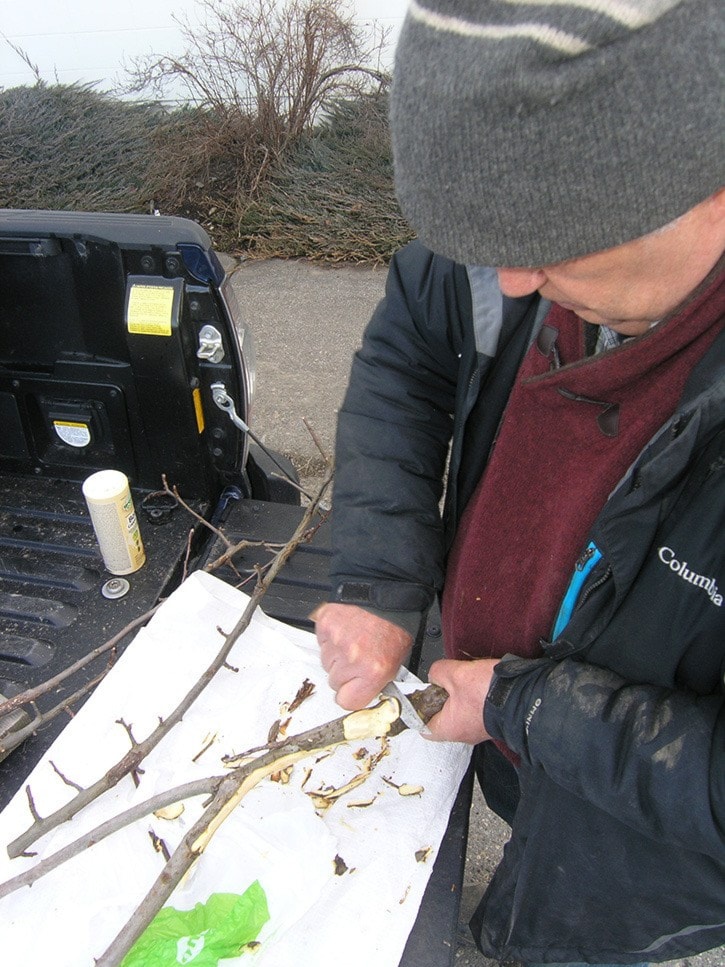COASTAL climate influences which result in the kind of warm and moist conditions permitting bountiful apple crops here, also bring a deadly disease, particularly for young apple trees, says an experienced local orchardist.
Anthracnose canker comes from a fungus which thrives in those same moist conditions, says Charles Claus of River Mist Farms on Brauns Island.
“That we have a coastal climate and that you can grow apples is wonderful,” he said. “But when you have a damp season, and we are in a coastal climate, cankers can release their spores into the air,” he said.
Those spores can also wash down a tree’s limb during rainy periods, spreading the infection as they take hold.
The canker first appears as a darkish elongated smudge on an apple tree’s bark, something even experienced growers may find hard to spot at first, said Claus. But too soon, it eats through the bark and into the cambium layer, exposing the vulnerable limb underneath and eventually forming what looks like a callus.
In this form it’s as if something has eaten away a portion of a tree’s limb and in young trees, with thinner limbs, it’s very pronounced.
“And that can kill a young tree,” said Claus of a canker that is taking hold.
Canker doesn’t restrict itself to younger trees and can infect older ones although the latter are better able to survive and keep producing apples, he added.
Depending upon the size of the canker, Claus advocates cutting off the limb containing it.
It’s a major step to take and may make some people leery, but it may be necessary for the tree to survive, he said.
If not cutting a limb off, depending upon its circumference, a canker might be removed by using a sharp knife to carve it out of the limb.
“You should also make sure all of the orange-coloured bark around is removed,” said Claus in adding that it is also part of the infection.
And to tackle spores which may have been washed down a limb from a canker during rains, people can use a mixture of copper sulphate, which can deal with the spores and is available at any outlet selling garden supplies, and linseed oil so it sticks to the tree.
Claus also advocates using lime sulphur and dormant oil as a way of protecting a tree from disease.
And having the soil around the tree tested for its pH level – growers should raise it to 6.8 – will also keep a tree healthy and more resistant, he said.
Stressed trees invite disease and one way to avoid that is to appropriately thin out fruit load levels, Claus added. Once a canker or a limb containing it is removed, the material should either be burned or buried 18 inches in the ground to avoid spreading the disease.
Apple tree growers wanting to know more can pick up literature, for a small fee, at Baker Extraordinaire, Uplands Nursery and the Spotted Horse Nursery.
